35 Trivia Facts About Dario Argento’s ‘Suspiria’ (1977)
“What do witches do?”

Suspiria, by legendary Italian filmmaker Dario Argento, was released in 1977. The film is the first entry in Argento’s Three Mothers supernatural horror trilogy. Inferno, the second film, was released in 1980. The last entry Mother of Tears was released in 2007, three whole decades after the first. Argento co-wrote the Suspiria script with Daria Nicolodi, his professional and romantic partner at the time. Jessica Harper stars as the lead, and the movie also features Stefania Casini, Joan Bennett, Miguel Bosé, Udo Kier, Alida Valli, and Flavio Bucci.
Many fans of the genre hold Supiria, shot in a little over four months, as a masterpiece and as one of the greatest horror films ever made. Although, that wasn’t always the case. The film initially received mixed reviews, including scathing critiques. It wasn’t until more recently that Suspiria achieved cult status. With its stunning vibrant and colorful cinematography, abstract art quality, heavy atmosphere, and unnerving soundtrack, Suspiria stands out from other movies of the genre. The movie doesn’t rely too much on plot to terrify, but rather it triggers the viewer’s senses to elicit scares.

Argento wanted a psychedelic fairy tale and has also described the film as a gothic one, and like all fairy tales do, the film begins with a narration—a “once upon a time,” if you will. Immediately the viewer is sucked in by William Kiehl’s serene voice telling us that “Suzy Bannion decided to perfect her ballet studies in the most famous school of dance in Europe,” which was set in Freiberg, Germany. He continues with, “one day at 9 in the morning she left Kennedy Airport, New York and arrived in Germany at 10:40 p.m. local time.” The wide-eyed, innocent, and small-framed Suzy Bannion then appears on the screen exiting an airport and bathed in red light. Already she feels like the protagonist of a Disney movie, and like many of them do, she’s about to come face to face with evil witches.
Read on below for some of the most interesting bits of trivia about Suspiria:
1. The script was partially inspired by a true story. Co-writer Daria Nicolodi shared with Argento a story her grandmother had told her about how she fled a musical academy as a young girl because those running it were practicing witchcraft.
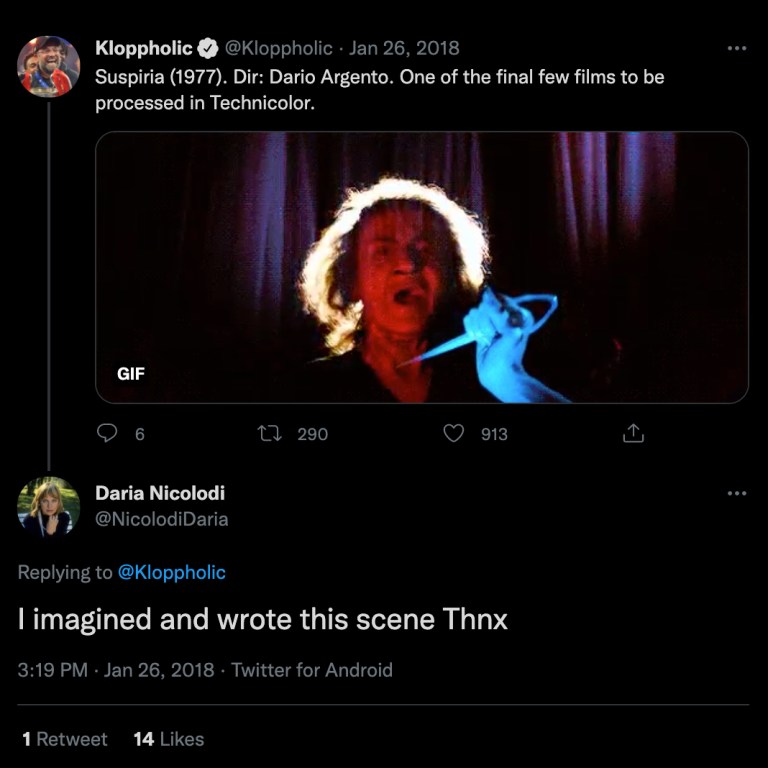
2. The trilogy’s mythology of the Three Mothers was inspired by English essayist Thomas De Quincey’s 1845 book Suspiria De Profundis, a collection of essays in the form of prose poems that combined hallucinogenic-induced visions with thought-provoking examinations on the nature of memory, dreams, and imagination. Quincey metaphorically discusses the mothers as Three Sorrows affecting humanity.
3. Nicolodi also drew inspiration from various fairy tales like Pinocchio, Alice in Wonderland, and Bluebeard. Dario Argento was heavily inspired by Snow White and the Seven Dwarfs, and even had cinematographer Luciano Tovoli watch the Disney movie to base Suspiria’s color palette on that of the animated film’s. Argento wanted it to look like a psychedelic fairy tale.
4. The structure of the movie came to Argento while tripping on acid.

5. In order to successfully achieve the unique color palette, Argento had Technicolor processors in Rome hold on to one of the last three-strip Technicolor machines still working until the movie was finished. It’s a common misconception that the film was shot using the outdated three-strip Technicolor process. It was actually shot on Eastman Color Kodak stock and then printed using the three-strip Technicolor process. It would become one of the last films processed in Technicolor.
6. Originally, the characters in the movie were meant to be much younger—aged 8 to 12. Producers didn’t like the idea given the violent subject matter and feared the film would be banned. The age was raised to young women in their 20s, but the script faced almost no changes, which is why the characters present with unnerving childlike qualities and dialogue. Argento included set design elements, like high doorknobs at level with the actresses’ heads, to make them seem smaller and evoke a fairy tale vibe.
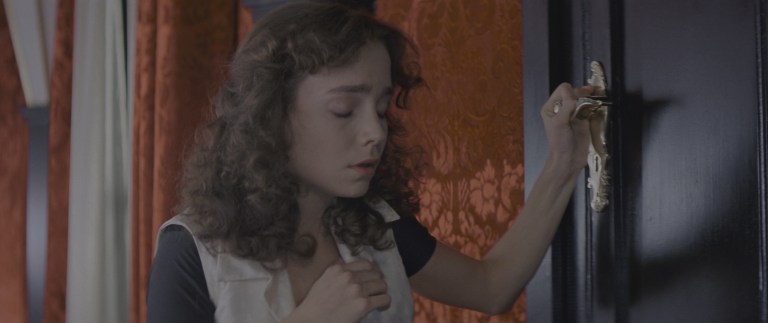
7. In addition to being a writer, Daria Nicolodi was an accomplished actress who had starred in Argento’s 1975 film Deep Red. She wanted the role of Suzy Bannion, but filmmakers thought that an American lead would boost the film’s international box office potential. Nicolodi then petitioned for the role of Sara, but an injury she suffered made it impossible. She does make an appearance as a woman at the airport in the opening scene where Suzy first arrives in Germany. Wearing a red blouse, she appears on the left side of the screen carrying a bag. Nicolodi also did some voice acting for the character of Helena Markos.
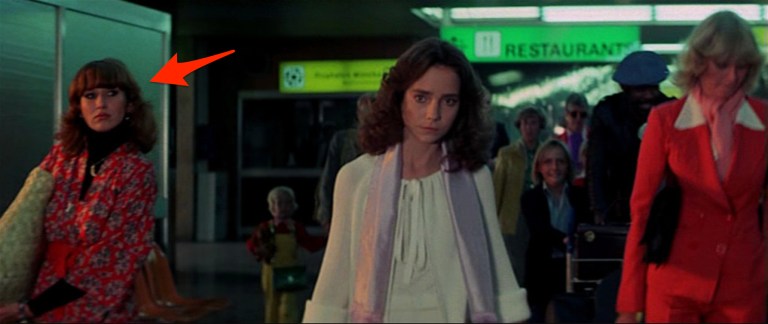
8. Tina Aumont was offered the role of Suzy Bannion before Harper, but she couldn’t accept due to scheduling conflicts.
9. Argento wanted to cast Jessica Harper partly for being impressed by her performance in Brian De Palma’s Phantom of Paradise (1974) and partly because of her big eyes.
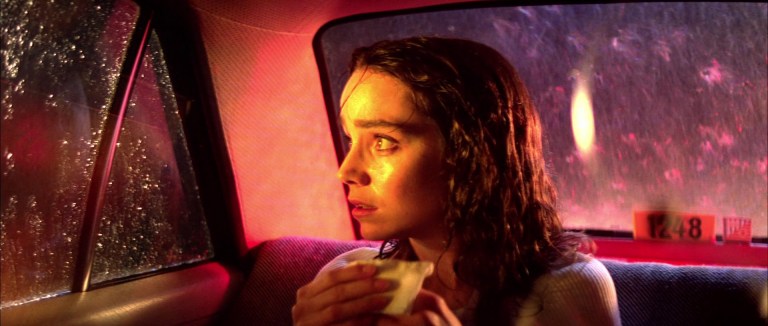
10. There’s a cameo by Dario Argento himself. He’s the phantom attacker in the opening murder sequence.
11. The musical score composed with the band Goblin was recorded before shooting began and was played on set at full blast to unnerve the actors and enhance their performance. This is why every frame accompanies the steady, building rhythm.
12. The whispering voice heard throughout the music by Goblin belongs to band member Claudio Simonetti, who has shared in interviews that he was just saying gibberish.
13. The actors were mainly fluent in Italian or German, which caused some language barriers, and they spoke in their languages while acting. As was common for Italian movies of the era, all dialogue was dubbed in post production. Sound was rarely recorded while shooting.
14. The fictional prestigious dance academy was modeled after a late gothic landmark in Freiburg, Germany, Haus zum Walfisch, or Whale House. It was constructed on a studio lot in Rome.
15. The interiors were mostly shot at the Incir Da Paolis Studios in Rome, while most of the exterior locations were filmed in and around Bavaria, Germany.

16. Lela Svasta, the 90-year-old woman who played Helena Markos wasn’t an actress nor was she credited on the film. Argento spotted her on the streets of Rome and cast her.
17. This was Joan Bennett’s last feature film in her role as Madame Blanc.
18. Rudolf Schündler, who played Professor Milius, didn’t speak English or Italian so he would gently tap Harper on the leg with his foot to let her know when he finished his line.
19. The actor who played Dr. Frank Mandel, Udo Kier, didn’t have enough time to prepare for his role, so a crew member laid behind the bench he sat on with Harper and read him his lines.
20. According to IMDB, for the scene where maggots fall onto the dancers’ heads, the crew dropped grains of rice from above, not the actual creepy crawlies.
21. To shoot the swimming pool scene with Suzy and Sara, Jesicca Harper and Stefania Casini were told to disturb the water as little as possible because Argento wanted a serene look.

22. Nothing can exceed Suspiria’s opening murder sequence. However, the scene in which Sara is chased and subsequently enmeshed in barbed wire before having her throat slashed comes pretty close. Argento instructed Stefania Casini to dive in and to struggle to reach the window on the other side of the room. Her pain feels raw and real because despite the barbed wire being fake, it was still real wire that kept tangling and wrapping itself around her. Her flesh was being pinched, so her struggle and to some degree, her pain, were real. Fortunately for Casini, this scene was shot in a single take.
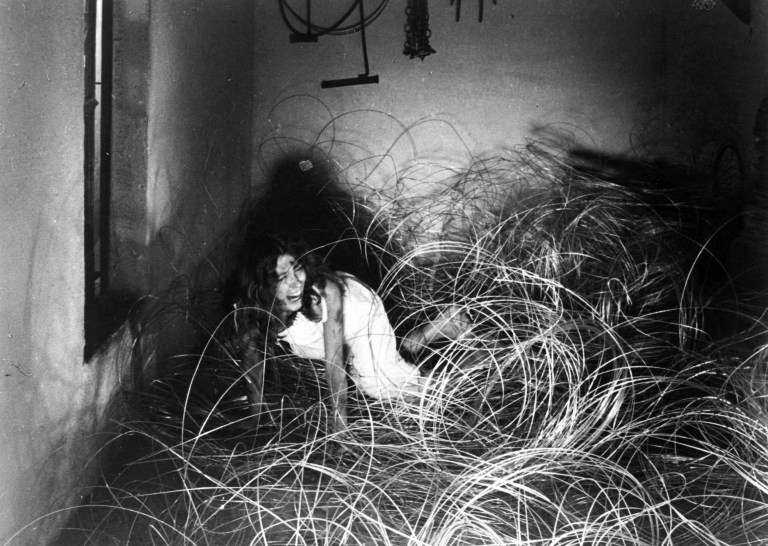
23. A dream Daria Nicolodi once had was written into the film’s finale. In her dream she came into contact with an invisible witch and there was a panther in the room with her that exploded all of a sudden. In the movie, it’s a porcelain panther that explodes.
24. The cab driver character, played by Fulvio Mingozzi, also appears in Inferno (1980), linking the movies.
25. Jessica Harper has shared in interviews that the most terrifying aspect of the film for her was the grand finale where everything explodes and shatters around her as she’s escaping the dance academy. Numerous rigged explosions went off close to her, and she felt genuinely afraid.
26. Barbara Magnolfi has suggested that Olga was a young witch in training. There was also a final scene in the script that would reveal Olga’s survival. It was never shot because “it was going to take away from the suspense towards the end.”
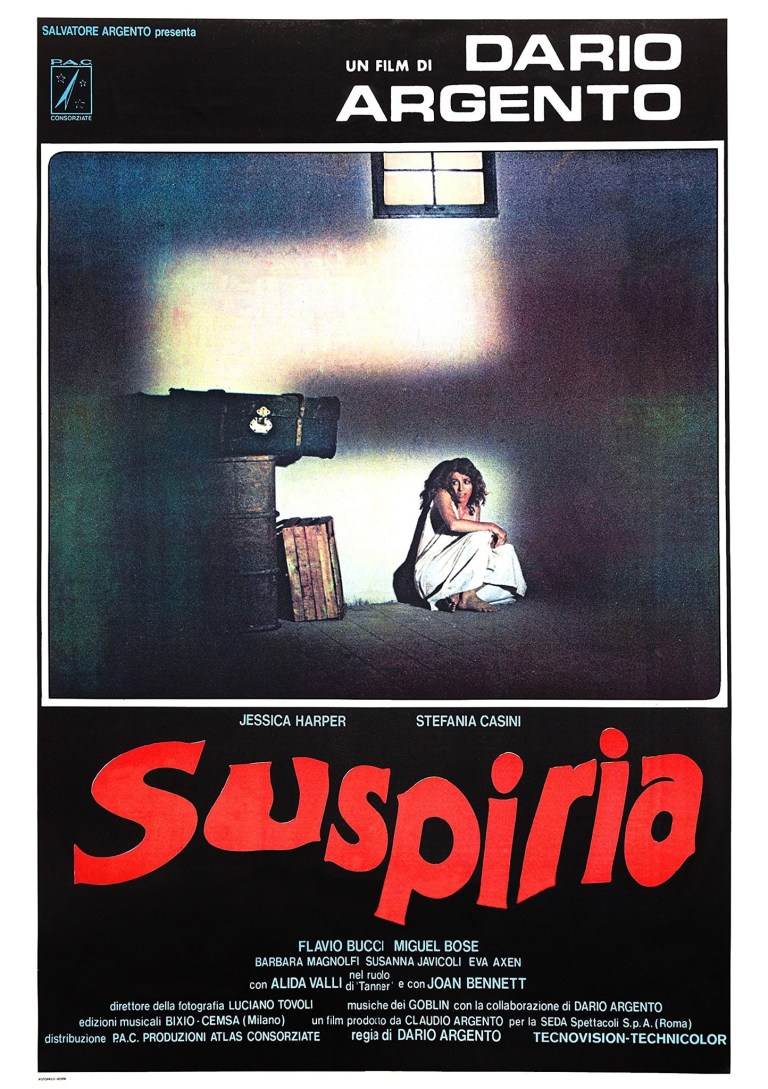
27. In an interview with Entertainment Weekly, Jessica Harper described Argento as very “focused” and an “inspiring director” with “strong aesthetic ideas.” She also said he was “gentle” in the way he treated the cast. The actress also recalled shooting the movie as a “life-changing experience.”
28. Dario Argento has said he believes Suspiria to be a lesbian story. In an interview for Xavier Mendik’s book Bodies of Desire and Bodies in Distress he said the following: “In Suspiria I wasn’t primarily interested in the theme of motherhood but, rather, in women’s lives. In fact, if you want to give a deeper reading of the film, it can be seen as a vaguely lesbian story; where lesbianism has a certain importance, or, more precisely, where the relationships between women are sometimes of a lesbian nature and are characterized by power struggles. There aren’t any male characters to speak of in the film; among those that do appear, one is blind, another is mute and the other is gay… All there is are power relations between women.”
29. Suspiria is regarded as a masterpiece and a horror classic today, but that wasn’t the case in 1977. Despite box office success in the United States, the movie received mixed reviews upon release. Janet Maslin wrote for The New York Times that the film has “slender charms, though they will most assuredly be lost on viewers who are squeamish.” Gene Siskel said in an article for the Chicago Tribune that Harper’s role was “reduced to cowering in corners” and the actress was “costumed to look much younger than her years,” though he praised Argento’s “visually stylish” direction. “It is a horror movie that is a horror of a movie, where no one or nothing makes sense: not one plot element, psychological reaction, minor character, piece of dialogue, or ambience,” wrote John Simon for New York Magazine.
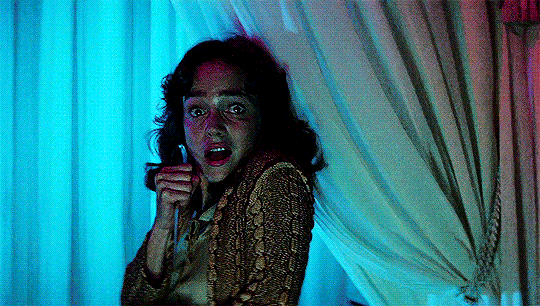
30. The movie is Dario Argento’s highest grossing movie in the United States.
31. 20th Century Fox was nervous about the release of a film of its kind, so they specifically created the subsidiary International Classics to distribute the movie.
32. Dario Argento wasn’t too crazy about the 2018 Luca Guadagnino remake of Suspiria. In 2016 he shared with IndieWire that he hadn’t been consulted on the project at all and was against the film even being made. He stated the following: “Well, the film has a specific mood. Either you do it exactly the same way—in which case, it’s not a remake, it’s a copy, which is pointless—or, you change things and make another movie. In that case, why call it Suspiria?” In a 2023 interview with Dazed he said, “I did not enjoy the movie so much, Luca Guadagnino’s one. Just because I don’t understand why he took my movie. It’s not a remake. It’s another movie. It’s not clear for me the connection between our two movies.”
33. Fans and audiences have called out the similarities and parallels of the witches’ coven and Nazi Germany, which had only been brought down 30 years before the film.
34. Suspiria has been cited as an inspiration by filmmakers like John Carpenter and Guillermo del Toro.
35. Norwegian thrash-metal band Susperia named their band after the movie.
Further reading:
